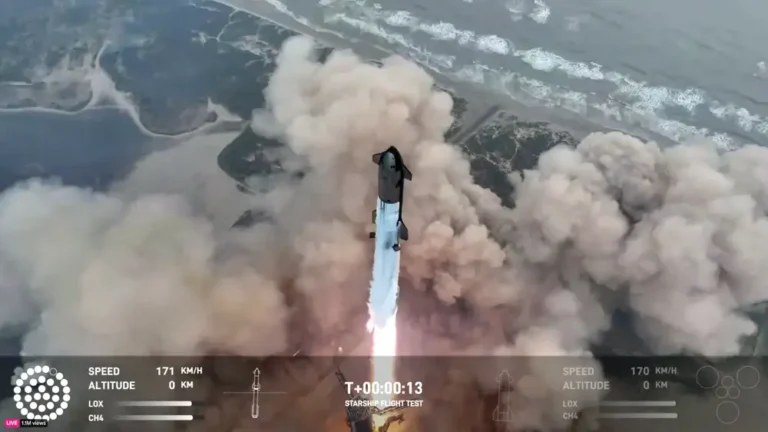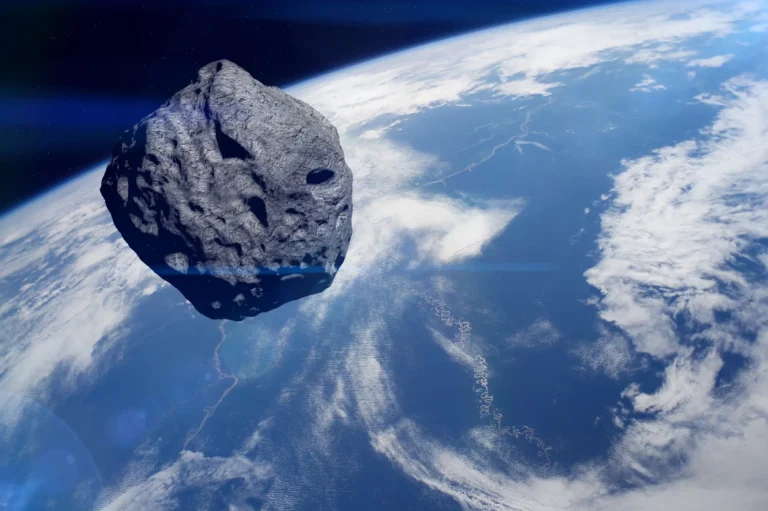Don’t miss your last chance to get a good look at Comet A3 before it’s gone for another 80,000 years
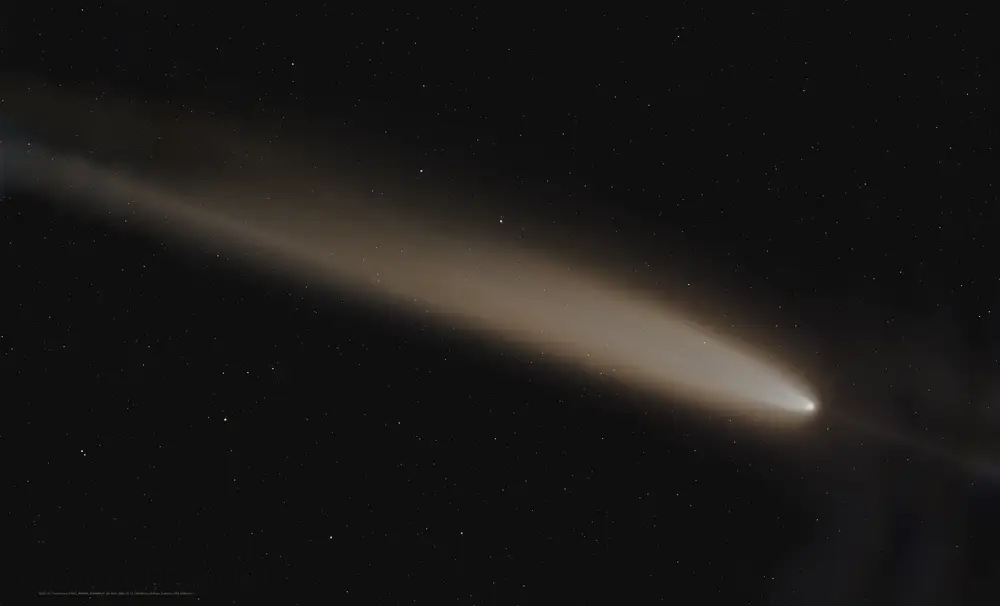
Comet A3 is bright, bold, and visible to the naked eye.
A rare comet is gleaming in our skies, visible to the naked eye in some places, and this weekend may be your last good chance to see it.
Comet Tsuchinshan-ATLAS, or Comet A3, is a dusty ball of ice from the Oort Cloud that takes about 80,000 years to orbit the sun. That means some of the last people to see it were Neanderthals.

Comet C2023-A3, or Tsuchinshan-ATLAS, pictured about 99.4 million miles from Earth by NASA astronaut Matthew Dominick.
This is the best opportunity in years, and possibly in a decade, to see a bright comet in the sky.
“I urge you to go to a dark spot in next few nights, with some friends and family, to see this rarity,” Dan Bartlett, an astrophotographer who tracks comets, told B-17 in an email, adding, “Every excursion, of which I’ve had four, has left me in awe.”
If you’re lucky, you may even spot the comet’s “anti-tail,” which points in the opposite direction of its long dust tail. The anti-tail shows the path where the comet has traveled through space.
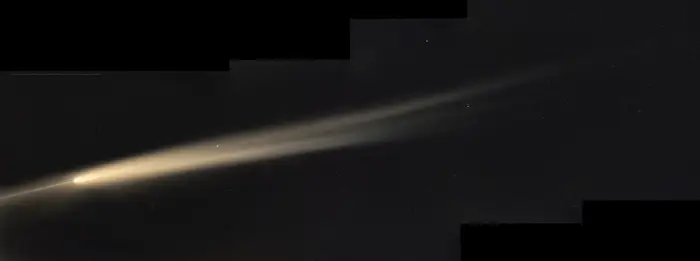
Comet A3 with its long tail and striking anti-tail.
But you need to be prepared.
“It’s just hard to make the time to be in the right place, to have the right experience,” Teddy Kareta, a planetary scientist who specializes in comets at the Lowell Observatory, told B-17 as the comet was coming into view in September.
After this, Comet A3 won’t return for tens of thousands of years. “See it now or lose your chance,” Kareta said.
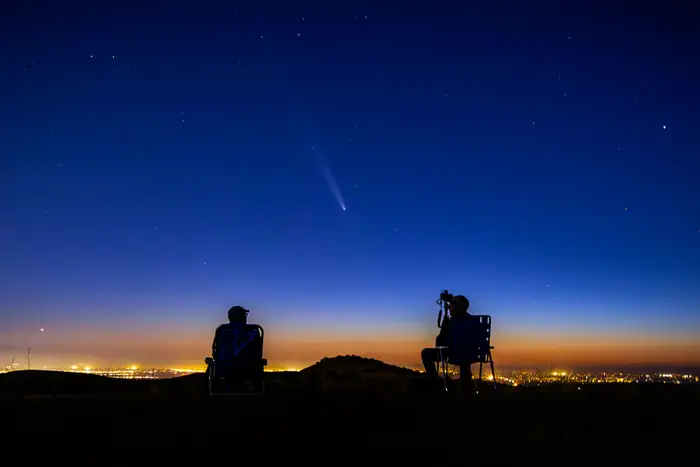
Comet Tsuchinshan-Atlas appears in the western night sky on a ridge near Boise, Idaho.
Here’s everything you should know to be in the right place at the right time and spot the comet.
When and where to see Comet A3
The bad news: The comet is dimming. The good news: So is the moon.
October’s full moon, which rose on Thursday, was also a supermoon and drowning a bit of the comet’s brightness. By Sunday night, though, the moon will have waned and skies will be darker.
Because of the moon’s dimming, Bartlett said, “I don’t believe the show will be any less spectacular even as the comet fades.”

Dan Bartlett says he took this photo of the comet’s tail with his iPhone, with a bright moon behind him.
Weather permitting, everyone in the Northern Hemisphere should be able to see Comet A3 each night this weekend, shining to the west for about an hour after sunset.
The comet will be above Venus, which is the brightest “star” in the sky, and slightly to the planet’s right.
After Sunday, Comet A3 will probably be visible in the sky for the rest of October and part of early November, but maybe only with binoculars or a telescope, according to Space.com.
Where to go and what to bring
For the best viewing, you should drive far from the city and gaze into a very dark sky. Check B-17 list of dark-sky spots in each state.
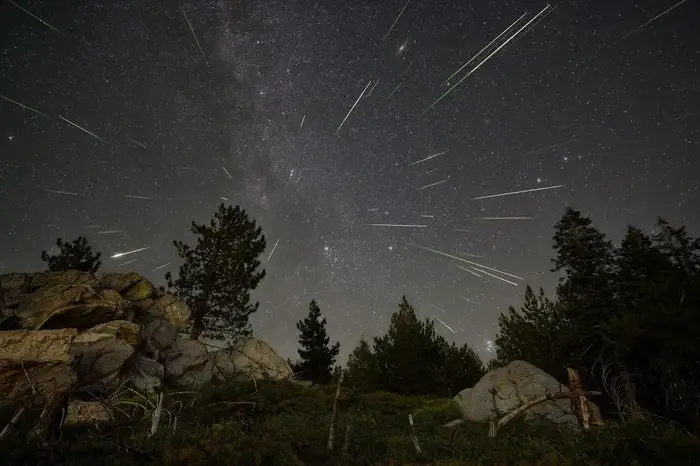
Like a comet, this meteor shower is much more visible in a dark sky.
If that’s not an option, though, find a relatively dark spot outside the worst of the city lights — maybe on a hill or just outside the city — where you can face away from any major light sources to look toward Comet A3.
“Even if you live in an area with lots and lots of street lights, lots of smog, lots of smoke, lots of whatever, you still ought to go for it,” Kareta said.
Check the weather before you go. If it will be cloudy all night, for example, you may want to plan for another evening. Wear warm layers.
If you have binoculars or a telescope, bring them. There’s no guarantee of naked-eye visibility, especially if you’re not in a dark-sky sanctuary. In some cities, you can check out binoculars or a telescope from your local library.
Especially if you’re a beginner, you may want to download a skywatching app such as Sky Safari ($4.99 in the App Store) or pull up a website such as Stellarium (free) on your phone. Once you’re on the ground, that will help you pinpoint where the comet is in the sky.
How to look for the comet
Finding a comet in the sky can be harder than you might think. You’ll need to know a few tips and techniques.
Once you reach your comet-watching spot, it can help to open your skywatching app to identify exactly where the comet is in the sky, near a feature you recognize — such as Venus or the Big Dipper.
Then give your eyes at least 30 minutes to adjust to the dark. Try not to look at your phone. Even a small burst of blue light is enough to reset your eyes.
If the comet doesn’t immediately jump out to you, try scanning around the area. Your peripheral vision is more sensitive to faint objects, so you may spot the comet in the corner of your eye.
You’re looking for a smudge, slightly bigger than a star. It won’t twinkle like the stars do, and it will look a bit blurrier, with less defined borders. It may appear elongated because of the comet’s tail, which is dust and gas flowing off its icy body.
“If you look at it and it looks like it’s behaving differently than some of the stars nearby, that’s a really good sign that you’ve picked up on the right thing,” Kareta said.
If you’re still not sure, try taking a long-exposure photo with your phone. This is built into most phone cameras’ nighttime settings. (Hint: Turn your brightness down to protect your eyes.)
The long exposure may provide a clearer image of the comet than your eyes can.
“It looked like a 4 of July fireworks fountain of ethereal, glowing gas emanating from a bright pinpoint of light,” Bartlett said. “The comet’s tail stuck straight up and seemed to go on forever.”
If you can’t find Comet A3 at all, Kareta recommends trying again a few days later.
“Go one night out, and then take a night off, and go back out. You’ll know better how to time it, how to get ready,” he said.
How to photograph the comet
If your phone isn’t picking up the comet, a DSLR camera might do the trick. Massey recommends taking a series of exposures.
You can also hold your phone camera up to the lens of your binoculars or telescope to take a picture through it. That method can be tricky, so it helps to practice a bit in advance.
Bartlett said it was easy to snap a photo with his iPhone from his dark-sky vantage point in the Sierras, even with the moon full and bright.
How historic is Comet A3?
The last big, bold comet was Neowise in 2020. It was visible to the naked eye and produced stunning photos such as this:
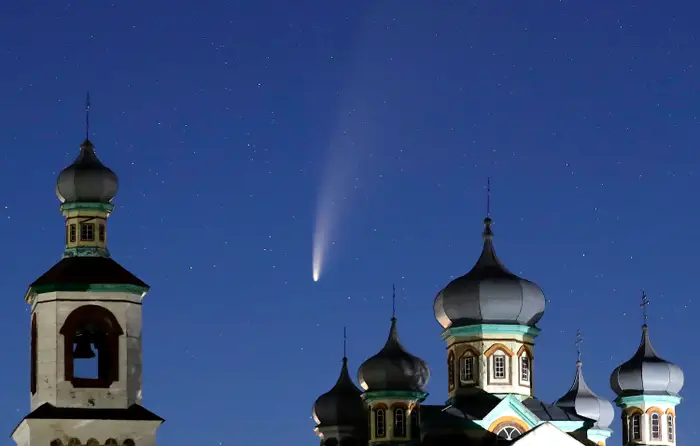
Comet Neowise streaking past an Orthodox church in Belarus.
Comet A3 seems to be living up to Comet Neowise’s dazzling legacy.
After this, we may be in a “long drought of comets,” Bartlett said.




